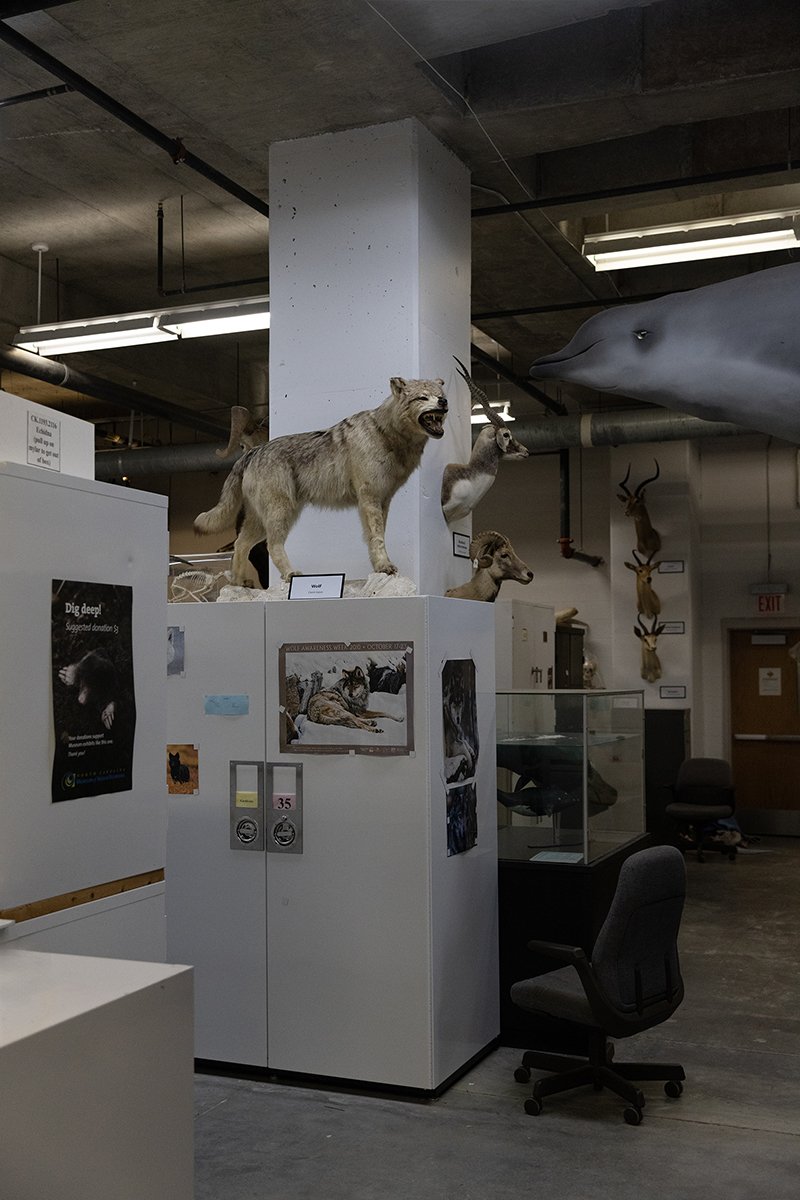
























Lily Hughes, research curator of ichthyology, poses for a portrait at the North Carolina Museum of Natural Sciences' Prairie Ridge Ecostation. Hughes combines data from collections with genomics to better understand fish diversity.

Bronwyn Williams, research curator of non-molluscan invertebrates, poses for a portrait in her lab. Williams research focuses crayfishes and symbiotic relationships between them and other organisms.

A bluehead chub, Carolina madtom, northern hogsucker, Roanoke log perch, smooth puffer skull, and palefin batfish.

John Gerwin, ornithology research curator, poses for a portrait in the museum’s collections area. Gerwin researches the life cycles of migratory birds, with a focus on their breeding biology.

Christian Kammerer, paleontology research curator poses for a portrait in the collections area. Kammerer’s research focuses on the transitions in the vertebrate fossil record between the Paleozoic and Mesozoic eras. These eras are separated by the end-Permian mass extinction, the most massive extinction event in earth history.

Ashley Wright holds an eastern box turtle, one of the many ambassador animals used at the museum for education outreach.

Patrick Truethardt, assistant head of the Astronomy & Astrophysics Research Lab, poses for a portrait. Truethardt's research focuses on the evolution of nearby galaxies by studying their different forms and structures.

View from the museum’s Prairie Ridge Ecostation. The 45-acre property is home to active research labs, an outdoor classroom, a nature-based playground, and a variety of trails. The museum is also currently fundraising to build an education center, which will expand amenities and services year-round and increase accessibility for guests with disabilities.

Chris Goforth, head of citizen science at the museum, poses for a portrait at Prairie Ridge Ecostation.

Dan Dombrowski, chief veterinarian at the North Carolina Museum of Natural Sciences, conducts an exam on a beaded lizard during a “Window on Animal Health” presentation.

Chief veterinarian Dan Dombrowski and his team anesthetize a fish for an eye exam during a “Window on Animal Health” presentation.

Eric Lund, paleontology lab manager, poses for a portrait in the Dueling Dinosaurs exhibit, featuring a 67-million-year-old fossil containing the skeletons of a tyrannosaur and triceratops. The skeletons were fossilized next to each other, in seemingly a fighting pose. Visitors can tour the lab space and see researchers at work uncovering the specimen.

Sean Moran, paleontology collections manager poses for a portrait in the museum’s collections area. Moran’s work is focused on the evolutionary response of fossil vertebrates to climatic change.

A Cynodont skeleton, found in Chatham County, NC. The skeleton is from the Triassic Period, about 27 million years ago.

Art Bogan, research curator of mollusks, poses for a portrait in the collections area at Prairie Ridge Ecostation.